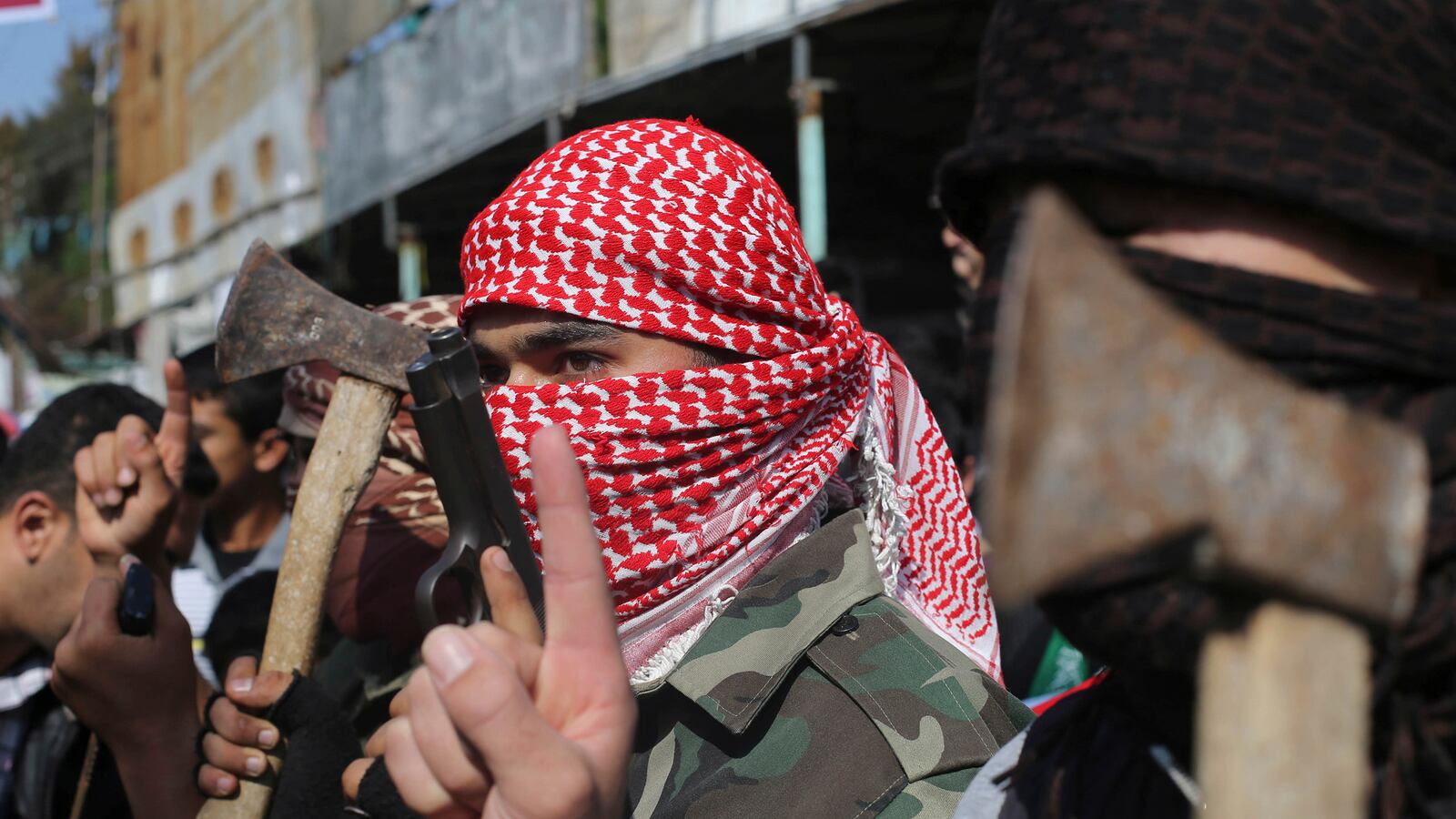JERUSALEM — I was awakened this morning in my East Jerusalem hotel room at 4:40 a.m. by the day’s first call to prayer, two or maybe three competing muezzins from nearby mosques fighting to be heard through loudspeakers that squeaked and popped like those I recall from the 1980s New York subway system. I went out to my terrace and listened for a while, letting my mind wander back over the limestone-flecked centuries, as the mind inescapably does here; then I read a couple pages of my book and fell back to sleep.
By 7:30, I and some of the people I traveled here with under the auspices of the Foundation for Middle East Peace were down in the Old City, trying to get into the Dome of the Rock and the Haram al-Sharif, or the Temple Mount as the Jews call it. Matthew Duss, who organized the trip, told us that sometimes non-Muslims can get through, sometimes not. This morning—no luck.
We tried three checkpoints, strung along the Via Dolorosa, where we passed two groups of tourists, one speaking Spanish and the other Greek, carrying crosses and retracing Jesus’s last steps. The third checkpoint seemed the most fearsome of all, if only because of the young Israeli soldier whose machine gun was pointed straight out, i.e., in the potential direction of human beings, although fortunately in the direction of no one in particular. There, we didn’t even ask.
We didn’t yet know what had happened between that first call to prayer and our checkpoint refusals—the most violent attack in Jerusalem in several years, as two East Jerusalem Palestinians crossed over into West Jerusalem, barged into an Orthodox synagogue and used axes and knives and a gun to kill four worshippers, all rabbis, three of them Americans. The two murderers, apparently members of the radical Popular Front for the Liberation of Palestine, were killed immediately by police.
This is my first time in Jerusalem since I was a kid, so I’m hardly going to pretend to you that I’m some kind of expert. But in these last few days I have learned, and observed with my own eyes, a few facts that you might find useful.
First, the difference between West and East Jerusalem is almost impossible to imagine until you see it. There are some streets in West Jerusalem (where the Jews live) that look literally like Beverly Hills or Boca Raton. The posh jewelers and dress shops, the leisure-class restaurants that announce their hipster quotient with casual confidence, the art galleries that cater to middle-denominator tastes, but do so elegantly and expensively, the buildings cut of new limestone, tastefully-not-tackily mimicking their 2,000-year-old cousins in the Old City. I don’t want to overstate it, but there is money there, clearly, almost to the point of there being a little fuck-you money.
I admit I didn’t see all that much of East Jerusalem, where the Arabs live, but let’s just say that I think I saw enough to get the picture. One is struck immediately by the number of empty real-estate plots, right in the city, garbage- and glass-strewn, cats sniffing around. They’re empty, it seems, because of the impossible mountain of hoops the Arab owners would have to jump through in the Israeli bureaucracy to get the permits. We stood outside the Old City in the neighborhood of Silwan, where some of the recent rioting has taken place. We gazed on a residential area of box-like homes stacked on top of one another on a steep hillside. I don’t think they were quite slums, but they weren’t many steps above it.
We’ve been doing what journalists do on these trips, meeting with elected officials and think-tank people and journalists on all sides of the story, trying to learn something. From these conversations I’ve gleaned two main points. First, the hopelessness right now is palpable, and this was before this morning’s attack. But the second thing is the way this city has changed in recent years, the intensification of the separation.
East Jerusalemites, we learn, are distinct from Gazans and even from Palestinians on the West Bank in the way they’ve been squeezed in recent years by stepped-up settlements. They almost never cross into West Jerusalem anymore, we were told. There is an at-grade light-rail line that for a couple of miles runs right along the Green Line that separates West from East. A few years ago, one guide told us, he would be on that train and would see many Palestinians mixed in with the Jewish passengers. That morning as he came to see us, he said he counted exactly two riders who looked identifiably Palestinian.
West Jerusalemites don’t go east, either. Last night, two cab drivers around 10:00 p.m. refused to take Matt and me back to our hotel, something Matt said he’d never encountered before. Our hotel is very close to the Green Line and up on a steep hill and would be an intensely self-defeating spot on which to choose to start a riot, but the cabbies just didn’t even want to cross the line.
Hamas called the attack “heroic” and, disgustingly, tweeted out photos of the bodies. Benjamin Netanyahu promised that Israel will respond with a “heavy hand” (as if all the things I’ve seen here have constituted a light hand?). A process already going in reverse after the collapse of Secretary of State John Kerry’s efforts and the recent Gaza war is now just going to start going in reverse even faster. This morning’s two assailants were retaliating for the hanging death on Monday of an Arab bus driver; a lynching, the Palestinians are calling it, while the Israeli police say suicide. After an autopsy, Tel Aviv’s Institute for Forensic Medicine went with suicide. A Palestinian pathologist said it was foul play. Both were looking, of course, at the same evidence, from the same autopsy.






